Corsica, a beautiful island in the heart of the Mediterranean, is renowned for its breathtaking landscapes, from unspoilt beaches to dramatic mountains, and a fascinating cultural heritage. Each year, travellers from around the world, seduced by Corsica’s unrivalled attractions, pick this captivating place as their primary holiday destination.
The timing of your journey may greatly impact the overall experience, including weather conditions, crowd levels, and costs so it is important to carefully choose the preferred travel period for your vacation.
In Corsica, late spring and early autumn are considered the ideal time for a visit. May, June and September provide optimal conditions to enjoy a broad range of activities in a vibrant atmosphere without the soaring temperatures of summer months.
This article will guide you through the island’s seasons helping you to find the perfect time for your dream-come-true Corsican escape. Keep reading to discover the Island of Beauty in spring, summer, winter and fall!
This page contains affiliate links meaning I get a commission if you decide to make a purchase through my links, at no extra cost to you. Click here to learn more.
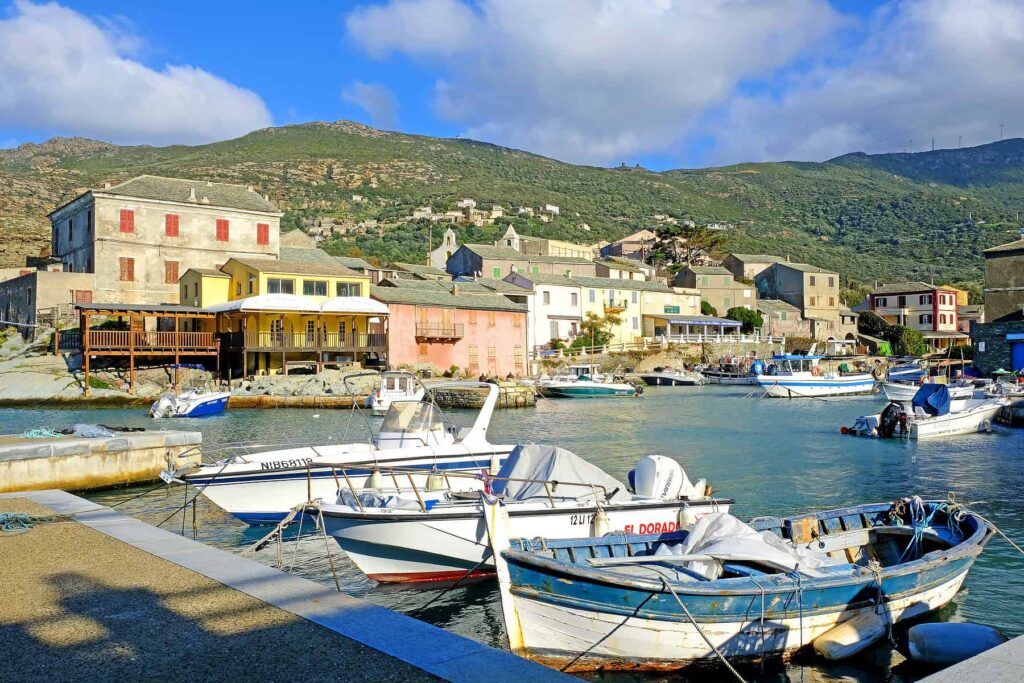
BEST TIME TO VISIT CORSICA – IN A NUTSHELL
The best months to visit Corsica are late May, June and September when the weather is sunny and warm, suitable for beach recreation, outdoor activities, and exploring. In this period, there are fewer crowds, accommodation and transport prices remain reasonable whereas temperatures rarely rise above 30°C.
However, Corsica is a great travel destination pretty much year-round. While its weather is generally mild and pleasant, some activities and attractions are better enjoyed at certain times of the year versus others. As few might know, this lush Mediterranean island is home to three small ski stations and vast territories suitable for snowshoeing, making it a fun winter destination.
In the following sections, I will explore Corsica’s seasons and their highlights to help you plan your stay.
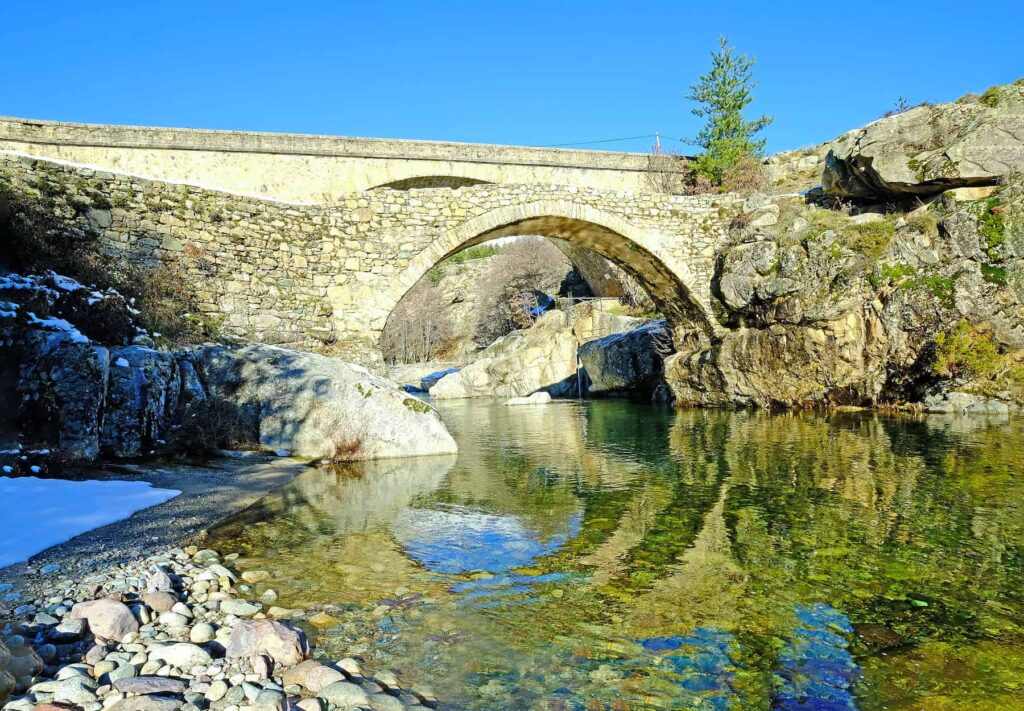
CORSICAN CLIMATE – ESSENTIAL FACTS
- Due to significant differences in terrain altitude Corsica is characterized by a range of micro-climates.
- In coastal regions, the climate is Mediterranean with hot dry summers and mild winters.
- Weather conditions evolve with altitude and at around 1500 meters above sea level, the climate changes into typically Alpine.
- The average of sunny hours per day in Corsica is 7.5.
- The island used to receive around 900 mm of rain annually but nowadays it is closer to 700 mm.
- Mountains are the wettest region of the island making the inland areas green and lush.
- The prevailing winds are westerly, north-westerly, and south-westerly with a persistent breeze along the coast.
BEST TIME TO VISIT CORSICA BY ACTIVITY

BEST TIME FOR BEACHES
The period between late spring and early autumn is considered the best season for beach fun and watersports. Sea temperatures vary from 21°C in June to 26°C in August, granting comfortable and enjoyable bathing. Water on the east coast is generally warmer compared to its western counterpart.
Corsica boasts some of the most attractive beaches in the Mediterranean, with crystalline turquoise waters and powder-soft white sands. Among the island’s top bays are Palombaggia, Santa Giulia, Saleccia, or Roccapina, each offering unique charm, from family-friendly shallow lagoons to secluded coves perfect for snorkelling.
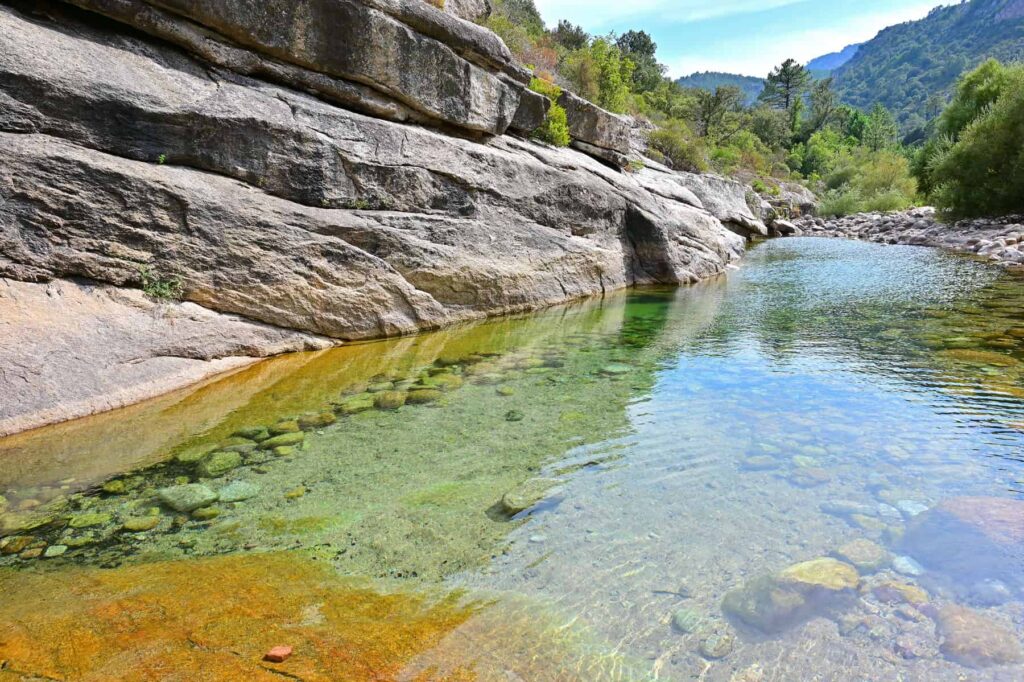
BEST TIME FOR RIVER SWIMMING
Summer (July and August) is the best time to experience wild river swimming, an exciting and popular outdoor activity in Corsica. In fact, many travellers visit the island primarily for its verdant, forest-carpeted river valleys dotted with sapphire-coloured natural swimming pools.
Each Corsican canyon is unique, featuring distinct characteristics such as the latitude, river source, rock type, depth, and water volume, all influencing the torrent’s temperature. Fango or Cavu are known for their pleasant warmth, whereas Asco, Restonica or Figarella are much colder rivers where swimming will be limited to shorter dips.
- Driving in Corsica – tips and scenic routes ideas
- Canyoning in Bavelle – Corsica’s most thrilling aquatic adventure
TRAVELLER’S COMPANION FOR A TRIP TO CORSICA – GRAB YOUR EBOOK!
33 Natural Pools and Waterfalls in Corsica
Descriptions – Directions – Coordinates
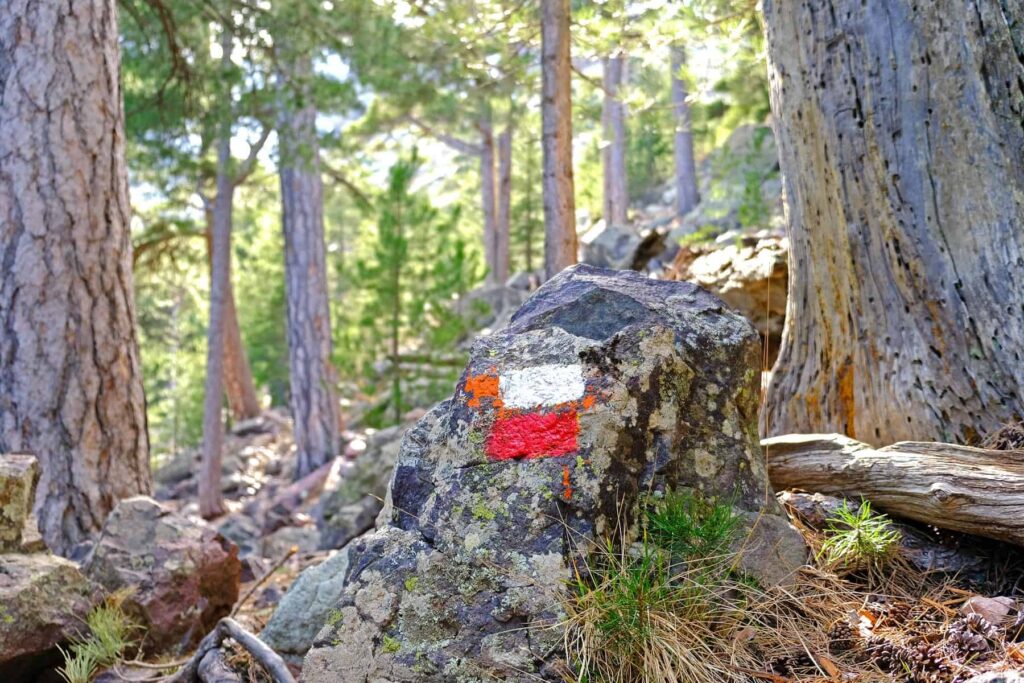
BEST TIME FOR HIKING
With over a thousand kilometres of waymarked trails, you may enjoy fabulous hiking in Corsica year-round, although many long-distance treks traversing the mountains are only available when the peaks are snow-free.
The famous GR20, one of Europe’s most challenging routes, may be accomplished between early June (sometimes the end of May) and mid-October when the mountain passes lose snow cover.
Summer, on the other hand, might be a demanding time for lower-altitude exposed trails due to intense sun radiation and excessive heat in the exposed sections. In July and August, choose wooded, shade-protected paths, ideally near rivers.
The off-season crowd-free time, including winter, is when the picturesque coastal walks or easy day hikes bring the most pleasure. Vivid seascapes of the Corsican coastline can be appreciated at their best when the flora is most abundant.
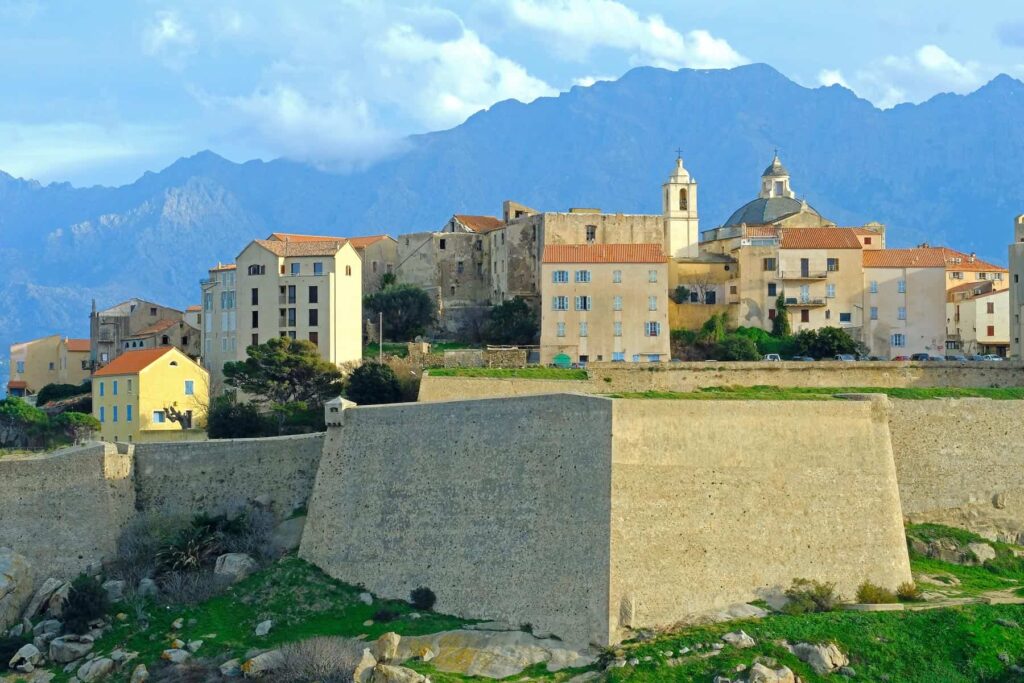
BEST TIME FOR SIGHTSEEING
Sightseeing in Corsica is accessible all year round although there are a few important points to be aware of.
In spring, summer, and autumn all places of interest, attractions and facilities are open and widely available to visitors, but in the peak season, you will face larger crowds and soaring temperatures.
The low season is a much more pleasant time for sightseeing but some venues, hotels and restaurants shut for winter, towns become quiet and days are shorter. Locations that remain vibrant throughout the year are Ajaccio, Corsica’s capital city, Bastia, Corte, Ile Rousse, or Sartène. As these places serve as social and economic centres for the local population, even in winter you will find plenty to see and do.
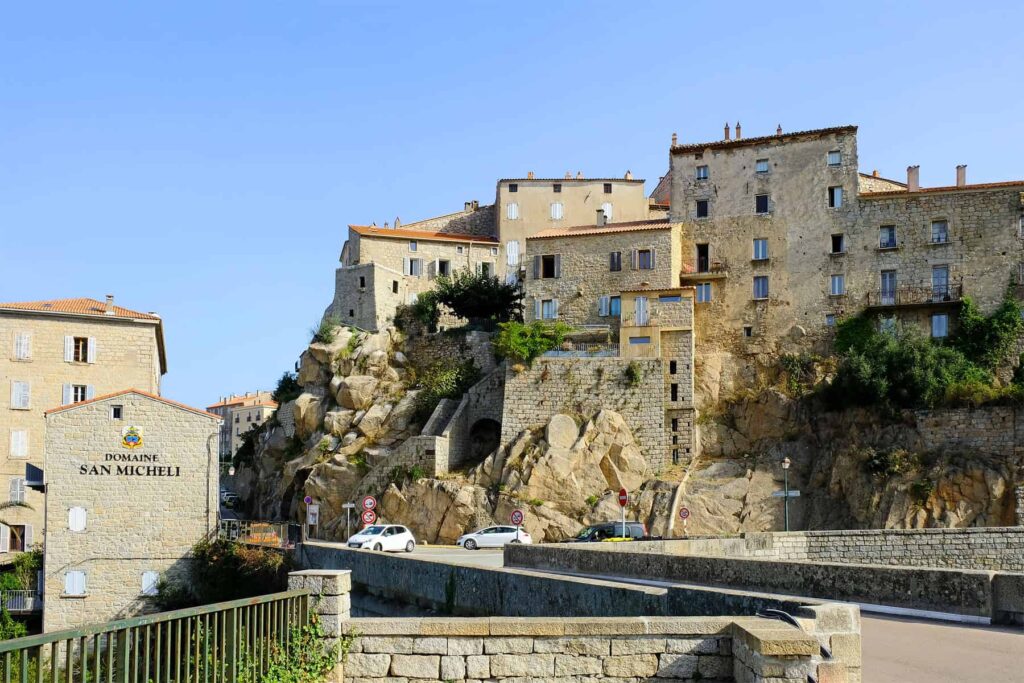
BEST TIME TO EXPERIENCE CULTURE
The Corsican calendar is filled with exciting festivals and events all year round. Authentic local culture may be encountered not just by visiting historical or religious monuments but through social interaction with local communities, trying traditional cuisine, or experiencing insular music and customs.
Corsicans are proud of their identity and enthusiastically participate in cultural events rooted in their ancestral patrimony. Depending on the season, various special occasions are celebrated following time-tested traditions.
Spring brings the festivities of Holy Week, where U Catenacciu, the Sartène Good Friday procession with a disguised barefoot penitent, is the most prominent. Summer comes alive with music and arts festivals, autumn celebrates wine (Patrimonio wine tradition), polyphonic singing, and films, while winter events focus on local products such as chestnut, olive oil, or charcuterie.
Wine lover’s companion for a trip to Corsica – Grab your ebook!
Corsica Wine Guide – from vine to glass
✓ 9 wine regions
✓ 74 producers
✓ 125 wines

BEST TIME TO AVOID CROWDS
If you fancy a peaceful getaway away from the crowds, avoid the month of August. Unmistakably, it attracts the largest number of visitors who take advantage of the precious time spent with their children, who are uniformly on their summer break.
Interestingly, July is often quieter, sometimes even more so than June, although temperatures soar. In the shoulder season, the number of tourists drops drastically, with crowds thinning out almost completely by the end of October.
Corsica’s winter season draws occasional travellers seeking the gentle Mediterranean sun and mild temperatures, but it is mainly the island’s citizens residing on the continent who return home for Christmas festivities.
USEFUL TIP – to find peace and tranquillity even in August, head to the Corsican mountains. Not only will you experience the welcoming respite from the coast’s hustle and bustle, but you will also have access to shaded forests and rivers’ cool freshwater.
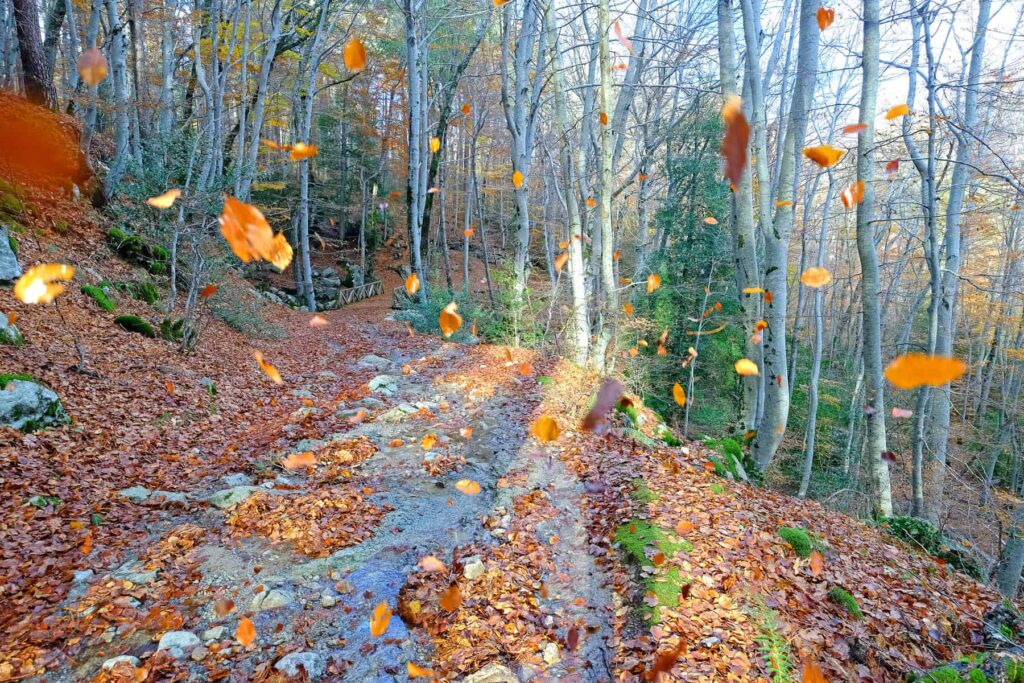
THE CHEAPEST PERIOD IN CORSICA
Late autumn, winter, and early spring offer lower prices with plane and ferry ticket fares plummeting, and accommodation costs dropping by as much as 50%. June and September grant the most balanced holiday offering, with good deals on essential travel services, pleasant, sunny weather, and relatively crowd-free access to Corsica’s stunning attractions.
Winter, although the cheapest time to discover the island, offers a very limited accommodation base, with many hotels and residences shut until spring. Bastia, Ajaccio, and Corte are your best bets to find an enjoyable place to stay.
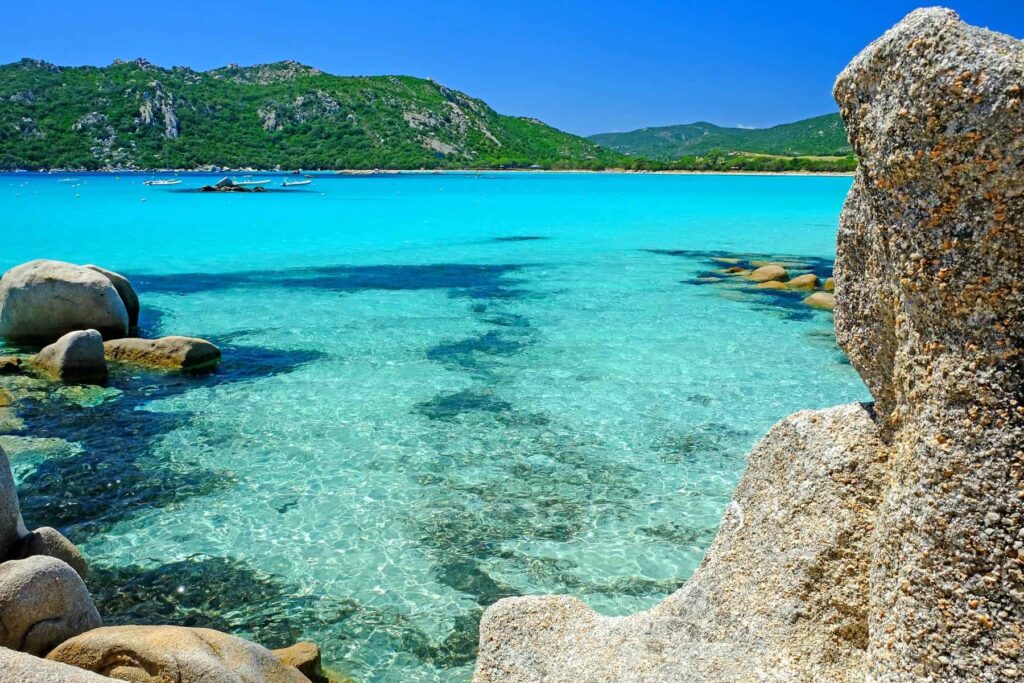
THE MOST EXPENSIVE PERIOD IN CORSICA
August is the most expensive month in Corsica, with July trailing not far behind. Accommodation, transport, parking, and even food are at a premium, making Corsica inaccessible for many travellers seeking a vacation on a budget.
In recent years, the island’s availability has become a vital concern for local authorities eager to improve its recognition as an economically inclusive travel destination. In 2024, tourists were able to benefit from last-minute half-price deals on ferry and plane ticket prices in August.

THE HOTTEST MONTH IN CORSICA
Temperatures come to a head in July and August, oscillating around the 30s and heat waves with peak temperatures reaching 38°C are possible. Occasionally, la canicule occurs as early as June, but on the island, the hottest days linger for a week or two before giving way to much more bearable conditions.
Unlike many other Mediterranean locations, Corsica experiences a persistent cooling sea breeze that arises around 9 a.m., providing much-needed relief in the coastal areas.
USEFUL TIP – During heatwaves, avoid exploring towns such as Ponte Leccia, Corte, or other hamlets situated in enclosed valleys as they become particularly overheated. With latitude, temperatures will drop; try places such as the upper Asco Valley to find comfort.

THE COLDEST MONTH IN CORSICA
January and February are the coldest winter months, often receiving snowfall in mountainous areas. Depending on the conditions, Corsica’s small yet welcoming ski stations may be open for visitors. Despite the cool season, temperatures rarely drop below 0 °C, making Corsica a pleasant winter destination. Nighttime frosts occur throughout the island, with mountains being the coldest. Fortunately, the ever-present bright Mediterranean sun bathes nature in its luminous glow.
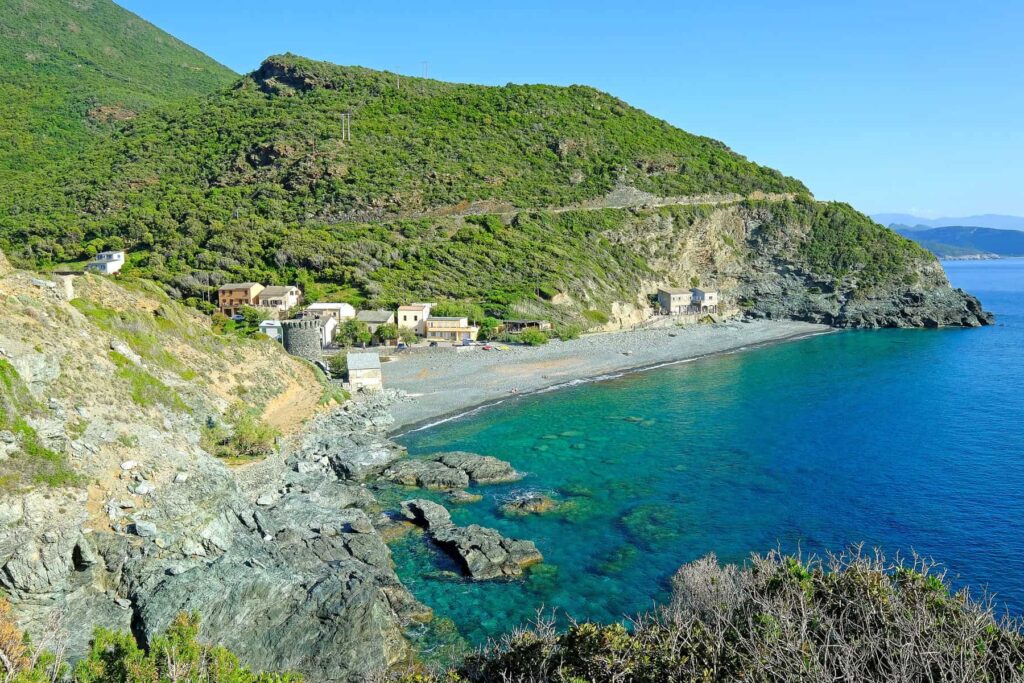
MOST WINDY PLACES IN CORSICA
The windiest places in Corsica are Balagne and Cap Corse in the north, and Bonifacio on the island’s southern tip, with only a handful of breeze-free days throughout the year. Sometimes, the gusts may get quite strong, reaching even 200km/h. The record was noted on Cap Corse in 2018 with the wind’s strength of 225km/h.
While the northern regions receive sudden, violent blasts of Mistral or Libecciu, Corse-du-Sud occasionally experiences the hot Sirocco, often accompanied by the red sand of the Sahara and scorching temperatures.
The mountainous inland areas may be subject to icy gusts in their vestibules all year round, making hiking much more tedious. As a rule of thumb, carry windproof clothing in your car when exploring the highlands, and be ready to protect your head, hands, and torso with a breathable yet resistant fabric, preventing discomfort from wind chill.
USEFUL TIP – Keep an eye on the weather forecasts when booking a boat trip in Corsica. In exceedingly unfavourable conditions, marine services will be halted and your tour refunded or rescheduled.
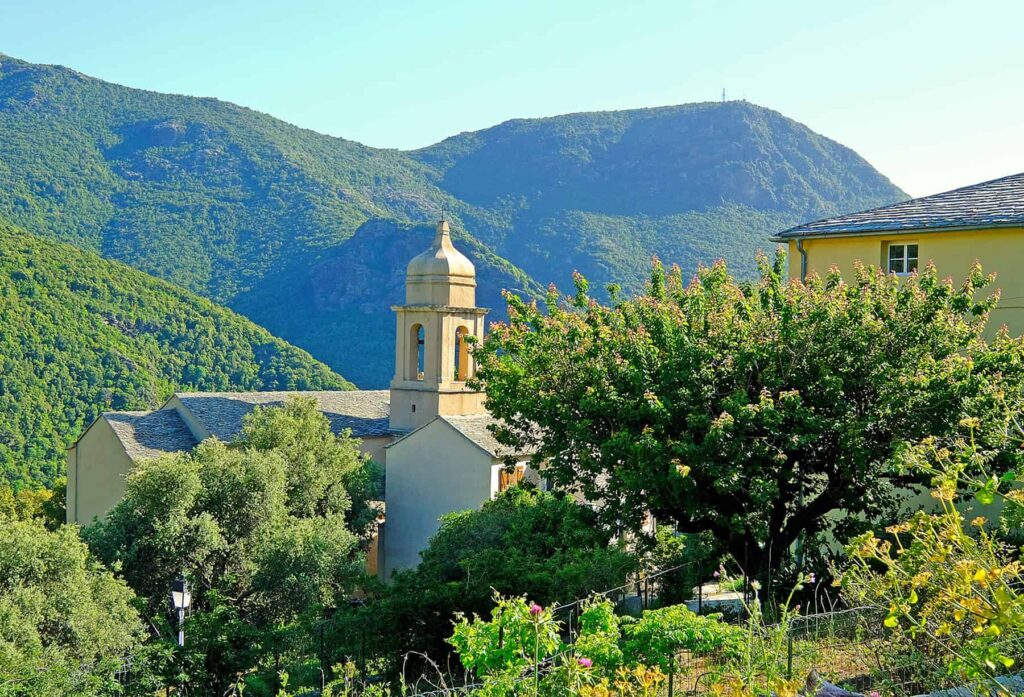
CORSICA DURING CHRISTMAS
Corsica’s senior citizens often point out that the weather during the Christmas season is always sunny, but Easter brings the rain. For the most part, it is a very accurate description of what happens every year.
Over the winter holidays, the island fills with the returning residents and their families, as well as occasional tourists seeking blue skies and agreeable temperatures, and Corsica delivers on both promises.
Christmas meals are often served outdoors, and people enthusiastically gather on the bar and café terraces to catch up and exchange news. At lunchtime, waterfront restaurants open their doors to al fresco dining amid a congenial atmosphere.
The mild winter weather makes the holiday season a perfect time to enjoy easy hiking trails, visit charming Corsican towns and villages, or partake in various events and traditions, including Christmas markets, traditional bonfires, or New Year fireworks displays. It is also the ideal period to savour delicious local seafood, particularly the juicy sea urchins, a staple on the winter menu.
Wine lover’s companion for a trip to Corsica – Grab your ebook!
Corsica Wine Guide – from vine to glass
✓ 9 wine regions
✓ 74 producers
✓ 125 wines
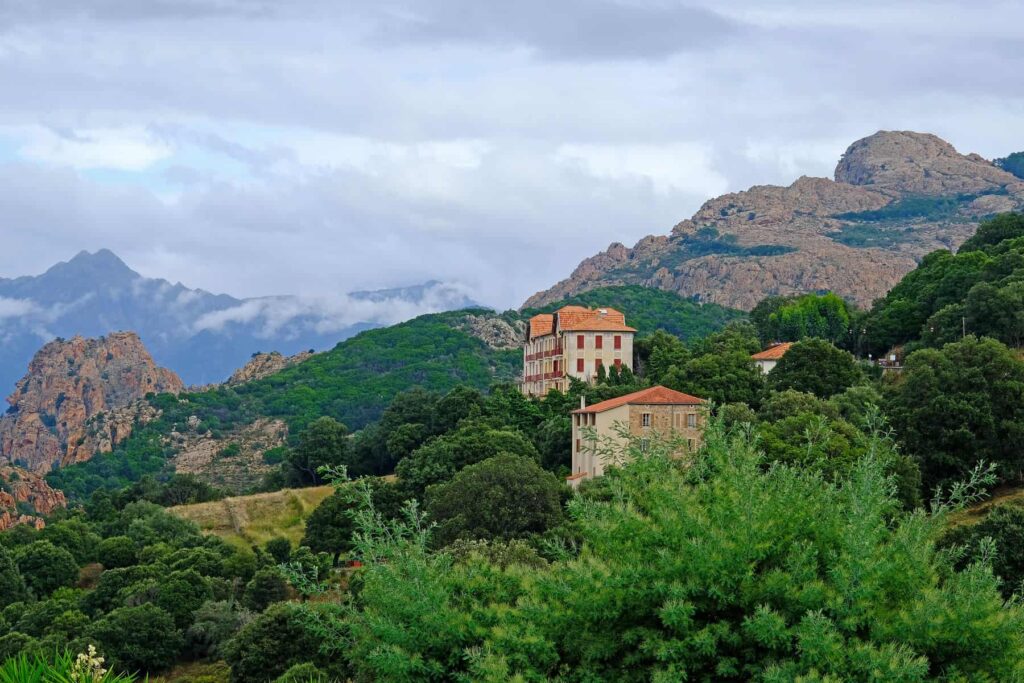
ACCURATE WEATHER FORECAST APPLICATIONS FOR CORSICA
- METEO FRANCE
- KITEMPU
- WEATHER PRO
USEFUL TIP – When checking the weather in Corsica, be sure to pick the most precise location. Being a mountainous island, Corsica features different climatic zones, and the forecasts may vary greatly depending on the location. Pay special attention to wind strength and thunderstorm indicators and avoid going out in severe conditions.
CORSICAN WEATHER BY MONTH

CORSICA IN SPRING
In spring, Corsica’s hotels and restaurants reopen to welcome an influx of tourists ready to embrace this lovely season.
The weather is comfortable with temperatures in the mid-20s and up to 10 hours of sunshine per day. Rain becomes periodical, however, strong winds, including the dusty and hot Sirocco, are predominantly frequent in May.
Fragrant flowers and shrubs are in bloom, showcasing landscapes of incredible beauty. Adventure enthusiasts may enjoy the boundless potential of outdoor activities such as hiking, cycling, horse riding, or climbing.
Beaches are less crowded at this time of the year, and first invigorating swims are possible. If you fancy cultural excursions, spring is a perfect time to explore Corsica’s historic towns or even to partake in the traditional Easter celebrations
MARCH
- Average daily temperature – 16°C
- Sea water temperature – 14°C
- Monthly rainfall – 53mm
- Snowfall is possible in the mountains
- Available activities – sightseeing, coastal hiking, cycling, seawater walking, rock climbing, horse riding, snowshoeing or skiing (if there is enough snow)
APRIL
- Average daily temperature – 18°C
- Sea water temperature – 15°C
- Monthly rainfall – 48mm
- Vegetation in bloom
- Available activities – sightseeing, coastal hiking, cycling, swimming (for the bravest), rock climbing, horse riding
MAY
- Average daily temperature – 21°C
- Sea water temperature – 18°C
- Monthly rainfall – 40mm
- Strong winds possible
- Vegetation in bloom
- Available activities – sightseeing, hiking, cycling, swimming, watersports, canyoning, kayaking, boating, scuba diving, rock climbing, horse riding
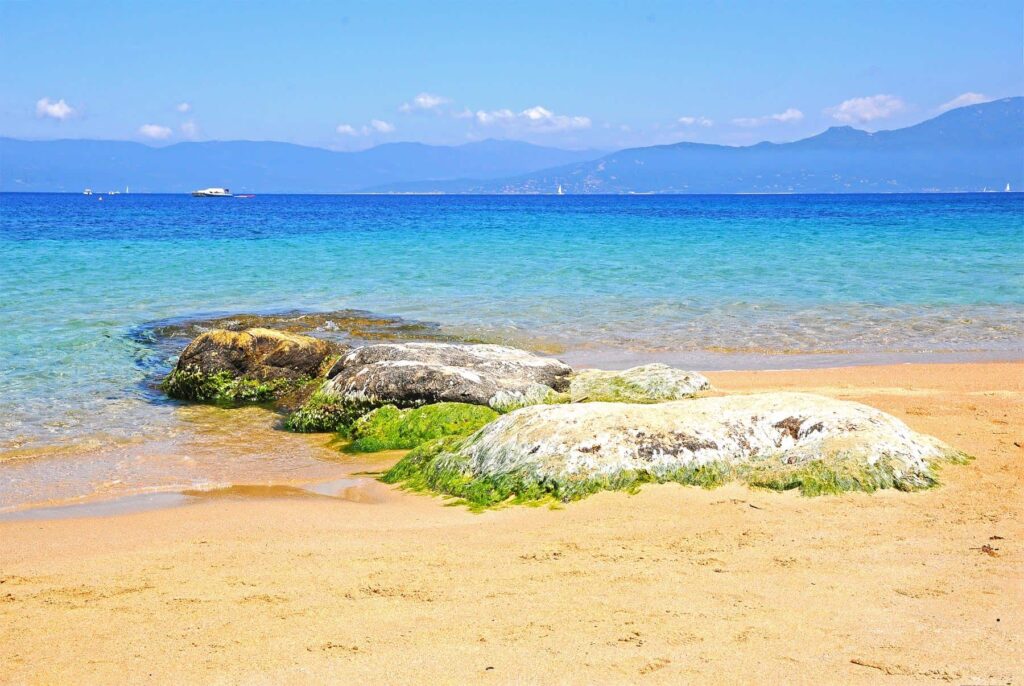
CORSICA IN SUMMER
Summer sees large numbers of tourists flocking to Corsica to enjoy the diversity of the island’s habitats.
In July and August, temperatures oscillate around the 30s and heatwaves with peak temperatures reaching 38°C are possible. To escape the swelter, you can head to the mountains where the air remains pleasantly fresh.
In late summer, temperatures begin to drop, and the sea is at its warmest. At this time of the year, the sublime Corsican beaches become the top attraction. An ever-present breeze alleviates the heat in the coastal regions, while a strong northwesterly wind, Mistral, is not a rare occurrence.
It’s a great period to enjoy water sports activities and explore mountain rivers; however, it is too hot for hard hiking in exposed areas.
JUNE
- Average daily temperature – 25°C (heatwaves possible)
- Sea water temperature – 21°C
- Monthly rainfall – 21mm
- Available activities – sightseeing, hiking, cycling, swimming, watersports, canyoning, kayaking, boating, scuba diving, rock climbing, horse riding
JULY
- Average daily temperature – 27°C (the second hottest month, heatwaves possible)
- Sea water temperature – 24°C (warm water perfect for swimming)
- Monthly rainfall – 10mm (the driest month)
- The hot Sirocco wind from the Sahara is possible
- Available activities – sightseeing, hiking, cycling, swimming, watersports, canyoning, kayaking, boating, scuba diving, rock climbing, horse riding, paragliding
AUGUST
- Average daily temperature – 28°C (the hottest month, heatwaves possible)
- Sea water temperature – 26°C ( water at its warmest)
- Monthly rainfall – 16mm (the second driest month)
- Sudden thunderstorms possible
- The hot Sirocco wind from the Sahara is possible
- Available activities – sightseeing, hiking, cycling, swimming, watersports, canyoning, kayaking, boating, scuba diving, rock climbing, horse riding, paragliding
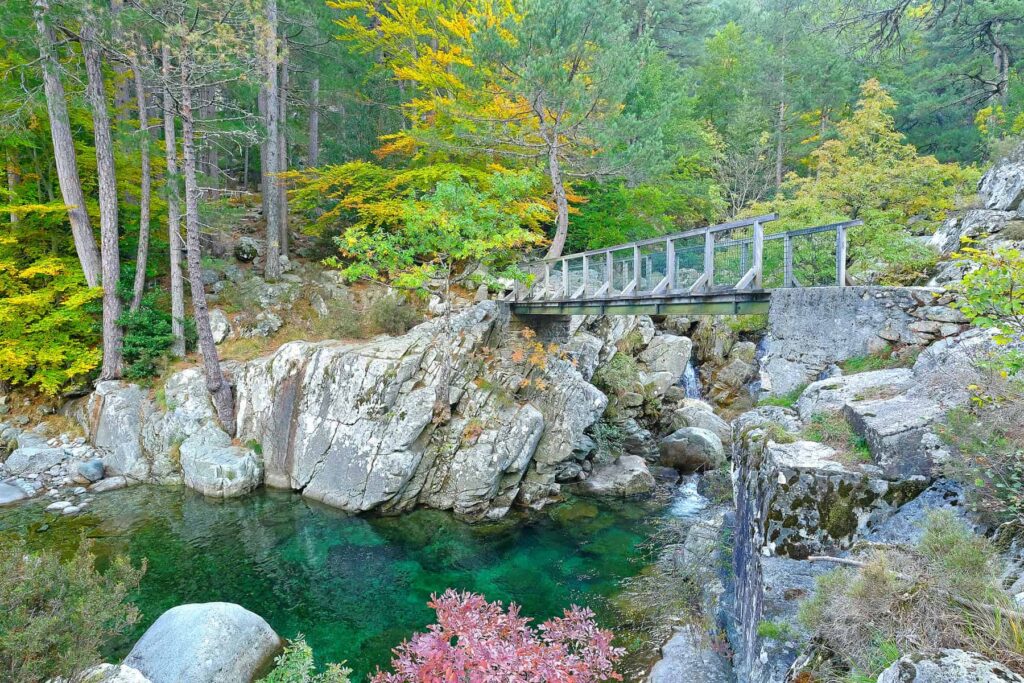
CORSICA IN AUTUMN
For many travellers, autumn may be the best time to visit Corsica. Temperatures remain in the mid-20s and the sea water is still balmy.
With heavy traffic free, you can enjoy a wide range of attractions, be it water sports or other outdoor activities. Hikers are especially spoiled for choice with an abundance of scenic trails and the famous long-distance trek GR20 available to be discovered.
In November, the weather becomes more unstable with recurrent periods of rain. At this time, many hotels and restaurants shut down for winter to reopen around Easter.
With temperatures dropping, discovering the island’s numerous historic treasures or exploring the fragrant evergreen vegetation of the inland areas is a real pleasure.
SEPTEMBER
- Average daily temperature – 26°C
- Sea water temperature – 25°C (warm water perfect for swimming)
- Monthly rainfall – 50mm
- Available activities – sightseeing, hiking, cycling, swimming, watersports, canyoning, kayaking, boating, scuba diving, rock climbing, horse riding, paragliding
OCTOBER
- Average daily temperature – 22°C
- Sea water temperature – 21°C
- Monthly rainfall – 88mm
- Available activities – sightseeing, hiking, cycling, swimming, watersports, canyoning, kayaking, boating, rock climbing, horse riding, paragliding
NOVEMBER
- Average daily temperature – 17°C
- Sea water temperature – 18°C
- Monthly rainfall – 97mm (the second wettest month)
- Available activities – sightseeing, coastal hiking, cycling, swimming in wetsuits, rock climbing, horse riding

CORSICA IN WINTER
Visiting the island in winter is a great choice for anyone looking to swap grey skies for a gentle Corsican sun.
With temperatures rarely dropping below 10°C, visiting authentic towns perched on hilltops or remote villages, and heritage sites is an attractive option.
January and February are the coldest winter months, receiving snowfall in mountainous areas. Depending on conditions, ski lifts may be open for visitors.
Planning your stay in Corsica around Christmas and New Year’s Eve season is a great solution to alleviate winter blues with alfresco dining in the glowing Mediterranean sun.
DECEMBER
- Average daily temperature – 14°C
- Sea water temperature – 16°C
- Monthly rainfall – 98mm (the wettest month)
- Cold winds in the mountains
- Snowfall is possible in the mountains
- Available activities – sightseeing, coastal hiking, cycling, rock climbing, horse riding, skiing or snowshoe walking (if enough snow), tasting of winter specialities
JANUARY
- Average daily temperature – 13°C (the coldest month)
- Sea water temperature – 14°C
- Monthly rainfall – 76mm
- Cold winds in the mountains are possible
- Snowfall is possible in the mountains
- Available activities – sightseeing, coastal hiking, cycling, rock climbing, horse riding, skiing or snowshoe walking (if enough snow), tasting of winter specialities
FEBRUARY
- Average daily temperature – 14°C
- Sea water temperature – 13°C (water at its coldest)
- Monthly rainfall – 65mm
- Cold winds in the mountains are possible
- Snowfall is possible in the mountains
- Available activities – sightseeing, coastal hiking, cycling, rock climbing, horse riding, skiing or snowshoe walking (if enough snow), tasting of winter specialities
TRAVELLER’S COMPANION FOR A TRIP TO CORSICA – GRAB YOUR EBOOK!
33 Natural Pools and Waterfalls in Corsica
Descriptions – Directions – Coordinates
VISIT CORSICA’S SUBLIME NATURAL POOLS – GRAB YOUR GUIDE
Discover Corsica’s glorious natural pools and waterfalls with a concise guide featuring 33 stunning river spots across the island. Perfect for wild swimming, family outings, and nature exploration, it provides clear access details, GPS parking coordinates, and nearby attractions. From peaceful basins to dramatic cascades, it helps you safely navigate the island’s rugged landscapes and uncover hidden gems beyond well-trodden tourist paths. Ideal for planning unforgettable outdoor adventures, this practical 51-page eBook may become your companion on an exciting journey to Corsica’s pristine rivers.
READ MORE
- Where to stay in Corsica – best places and areas for your visit
- Corsica’s best beach hotels and top coastal locations
- Best places to stay in Corsica for couples
- Corsica – where to go and what to do
- Ferries to Corsica – practical guide to booking your crossing with Corsica Ferries
- Visiting Corsica – how to get there
- Is Corsica an expensive travel destination – money guide for visitors
- Getting around Corsica – do you need a car?
- Don’t expect this in Corsica – 20 surprising facts for visitors
- Top 3 destinations for a car-free holiday in Corsica
- Corsica or Sardinia? Find your dream Mediterranean escape
- Is Corsica a safe place to visit – travel advice and tips
- What to avoid in Corsica – 11 common mistakes
- Driving in Corsica – tips and scenic routes ideas
- Visiting Corsica in winter – the ultimate travel guide




2 comments
Hello, we would like to visit Corsica next September, hopefully restrictions will be lifted by then. We probably would hire a car and explore the island over a 10 day period. Please can you let me know how easy it is to book accommodation as we go or does it need to be booked in advance. We would like to stay in B&B’s and small hotels.
Best regards, Mary
Hello Mary,
Thank you for your question. September is a wonderful time to visit Corsica and I hope you’ll enjoy your travels. It is definitely advisable to book your accommodation well in advance, even before the beginning of the summer season. Given the circumstances, I think that contacting the hotels directly to confirm availability is a safe option. Last year, when the restrictions got lifted, Corsica became a very popular tourist destination for European visitors not willing to travel too far. It may be the case this coming summer too.
All the best,
Karola